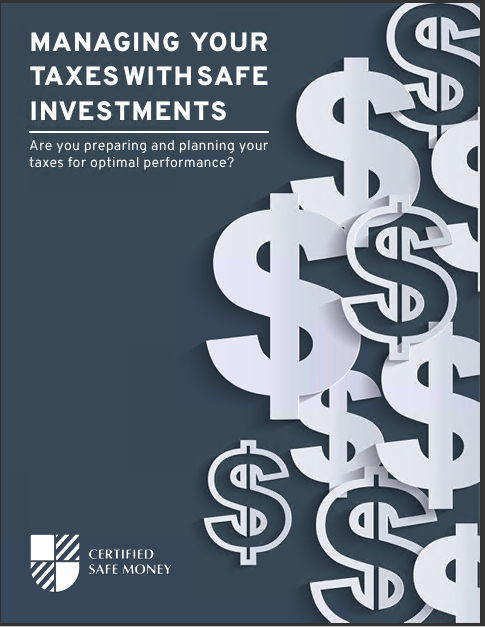A variable annuity rider (GLWB) Guaranteed Lifetime Withdrawal Benefit offers a monthly payment level even if economic losses lower the agreement’s cash value. Most of these riders also let you use your cash value as necessary for withdrawals. Main Points
- Adding a (GLWB) riding to a variable annuity will provide insurance against marketplace losses.
- The GLWB may provide a “stepped-up” advantage if the assets in the annuity subaccounts increase in value, depending on the provider and annuity.
- While agreeing to the rider, annuitants should know that it often comes with extra costs and taxes and is voluntary.
Recognizing GLWBs Any annuity is an agreement in which the customer, referred to as the “annuitant,” pays a cash transaction or ongoing payment to the provider. For this, the annuitant receives monthly payments from the issuer for the rest of their life or a certain amount of years. The issuer of a fixed annuity merely pays a predetermined interest rate on the money you have paid to it when you purchase one. However, you may use subaccounts with a variable annuity to make market investments. Although this feature increases your potential for gain, it also exposes you to possible losses. A GLWB may help to reduce that danger. Work of GLWB Riders The cash value of a variable annuity is determined by the premiums you have paid, plus or minus any market returns. However, the contract for a GLWB rider has a different benefit basis frequently referred to as a “withdrawals base” and utilized to determine lifetime withdrawals. This advantage base is used to compute the guaranteed minimum withdrawal once you choose to receive your income stream. Your guaranteed yearly payment is calculated by applying a particular percentage to the reward base based on the agreement’s conditions and your age. It is often based on your age at the beginning of the annuity stage. In contrast, if you start getting payments at 70, your contract’s required rate can be more significant, say 5.25%. For instance, if you’re 65, your agreement might call for a 5% rate of return whenever you make your first withdrawal. One crucial characteristic of GLWB riders is that your payout amount is determined by a more excellent benefits base or cash value when you receive additional assured payments. You may be able to take further cash withdrawals from your cash value even during the annuity stage or period because of GLWB riders. However, doing so often causes your benefit base to be reduced. Most insurance firms levy an annual cost to take on the market risk that the consumer would otherwise carry. Therefore, before obtaining an annuity, it is crucial to analyze the contract before receiving an annuity since those expenses might vary considerably. Possible Qualities Some GLWB riders provide extra advantages that can increase your insured withdrawal. The provider can tack on an additional cost or include it in the price of the actual rider. Examples that are more typical include: Increased Feature The employer will regularly evaluate the current money in the account with the sum initially used to calculate the GLWB if the rider has a step-up feature. The benefit will be adjusted if the cash amount is more significant. Lowest Percentage of Return The insurer could give your benefit basis a minimum return on investment. Also, the cash value of your benefit base (plus the required minimum return) will determine the withdrawal amount. Disadvantages and Advantages of a GLWB In addition to the above content, let us discuss some advantages and disadvantages of GWLB. A GLWB rider’s main advantage is protecting you against the chance of getting a lesser lifetime payment if the market declines. Additionally, since the rider locks up the money you placed into the contract after the annuity period starts, you may retrieve your cash value if needed, which is impossible with a standard annuity. Besides the advantages, the expense of acquiring this insurance is a drawback. With more time for the bonds and stocks in their subaccounts to recover, those who begin contributing to the annuity long before they annuitize have reduced exposure to market risk overall. Moreover, consumers with a longer time perspective may thus wish to avoid paying the additional cost associated with a GLWB rider.
Contact Information:
Email: tcarmack@hotmail.com
Phone: 6232511574
Bio:
I grew up in Dubuque, Iowa, where I learned the concepts of hard work and the value of a dollar. I spent years in Boy Scouts and achieved the honor of Eagle Scout. I graduated from Iowa State University and moved to Chicago and spent a few years managing restaurants. I then started working in financial services and insurance helping families prepare for the high cost of college for their children. After spending years in the insurance industry, I moved to Arizona and started working with Federal Employees offing education and options on their benefits. I became a Financial Advisor / Fiduciary to further help people properly plan for the future. I enjoy cooking and traveling in my free time.
Disclosure:
Investment advisory services are offered through BWM Advisory, LLC (BWM). BWM is registered as an Investment Advisor located in Scottsdale, Arizona, and only conducts business in states where it is properly licensed, notice filed, or is excluded from notice filing requirements. BWM does not accept or take responsibility for acting on time-sensitive instructions sent by email or other electronic means. Content shared or published through this medium is only intended for an audience in the States the Advisor is licensed in. If you are not the intended recipient, you are hereby notified that any dissemination, distribution, or copy of this transmission is strictly prohibited. If you receive this communication in error, please immediately notify the sender. The information included should not be considered investment advice. There are risks involved with investing which may include market fluctuation and possible loss of principal value. Carefully consider the risks and possible consequences involved prior to making an investment decision.














